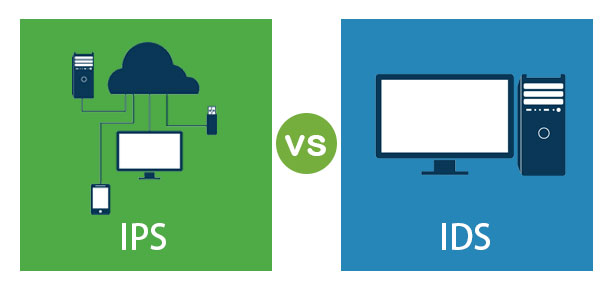In today’s world of cyber threats, it is essential to have an effective security system in place to protect your network and data. Two of the most popular security solutions are Intrusion Detection Systems (IDS) and Intrusion Prevention Systems (IPS). Although both of these systems can help secure a network, they work in different ways and have different strengths.
Intrusion Detection Systems (IDS) are designed to detect malicious activity on a network. An IDS system looks for patterns of suspicious behavior that could indicate an attack or intrusion attempt. It logs all activity and generates alerts when suspicious activity is detected. However, IDS does not take any action to block the threat; instead, it sends alert notifications to administrators so that appropriate countermeasures can be taken.
Intrusion Prevention Systems (IPS) takes things one step further than IDS by automatically taking action to thwart the detected threats. This includes measures such as blocking traffic from a particular source, dropping packets, resetting the connection, or reporting the incident. In other words, while IDS systems detect malicious activity, IPS systems are designed to prevent them from entering your network in the first place.
When choosing between an IDS and an IPS solution for your network security needs, it’s important to understand how each works and what their strengths are. An intrusion detection system can provide valuable insight into potential security incidents on your network but cannot take any action on its own; you will need to have another layer of protection in place such as a firewall or other security measures in order to actually block malicious traffic from entering your network. On the other hand, an intrusion prevention system is designed with active defense mechanisms that will actively block malicious traffic before it can reach your internal resources.
Ultimately, both Intrusion Detection Systems and Intrusion Prevention Systems can be effective tools for protecting your network against cyber threats. The decision of which one to use ultimately depends on your particular needs and budget constraints.

Comparing the Benefits of IPS and IDS
IPS is generally considered to be better than IDS, as it is able to take proactive measures to protect a network from malicious activity. IPS systems have the ability to detect, analyze, and respond to malicious activity in real-time, typically by blocking traffic from a particular source or dropping suspicious packets. Additionally, IPS systems are capable of correlating different events or activities in order to detect more advanced attacks. This means that they can detect and respond to threats that IDS systems may not be able to identify. For these reasons, IPS systems are often preferred over IDS systems for security purposes.
Advantages of Using Intrusion Detection Systems (IDS) Over Intrusion Prevention Systems (IPS)
IDS systems are useful for providing detailed information about potential threats and attacks on a network. Unlike IPS systems, IDS does not actively block malicious packets from entering the network. Instead, it passively monitors the traffic flowing through a system and identifies anomalies or suspicious patterns that may indicate malicious activity. This allows an organization to understand in detail what is happening on their network and take appropriate action, such as additional monitoring or blocking access to certain parts of the network. Additionally, IDS allows organizations to respond quickly to any malicious activity that is discovered, ensuring that their networks remain secure and protected against cyber threats.
Understanding IPS and IDS in Security
Intrusion Detection Systems (IDS) and Intrusion Prevention Systems (IPS) are two technologies used to monitor and protect a computer network. An IDS is a tool that monitors network traffic, logs it, and alerts the network administrator when suspicious activity is detected. It detects malicious activities such as port scans, denial of service attacks, viruses, worms, Trojan horses, and other malicious traffic. An IPS are similar to an IDS in that it monitors network traffic and logs it, but it also uses rule sets to block malicious activity before it can cause harm. It can be used to prevent unauthorized access or even block malicious code from being able to execute on the system. IPS typically has more features than an IDS, such as rate limiting or blocking of specific ports or IP addresses. Both technologies play an important role in keeping a network secure by monitoring for malicious activity and alerting the security team when something suspicious is detected.
Differences Between IDS, IPS, and Firewall
The main difference between Intrusion Detection System (IDS) and Intrusion Prevention System (IPS) is that the former detects malicious activity while the latter prevents it. An IDS system will alert IT personnel and other stakeholders about potential suspicious events, but it does not block any traffic or provide protection itself.
A firewall, on the other hand, is a network security system that monitors and controls the incoming and outgoing network traffic based on predetermined security rules. It works by inspecting data packets that pass through a designated network boundary, allowing only those that meet certain criteria to pass through. Firewalls can block activity originating from known suspicious IP addresses or entities, which makes them more effective at preventing malicious activities than IDS/IPS systems alone.
Do IDS and IPS Provide Complementary Security Benefits?
Yes, you need both an IDS and an IPS to effectively secure your network. An Intrusion Detection System (IDS) detects malicious activity on your network by analyzing traffic for suspicious behavior and/or known attack signatures. It is used to detect security breaches and provide a warning before any damage can be done. An Intrusion Prevention System (IPS) goes one step further and actively blocks malicious activity, preventing the attack from succeeding. It does this by examining traffic in real-time and taking action when threats are detected. Both products are necessary for comprehensive network security, as the IDS will identify potential threats while the IPS will actively prevent them from occurring.
The Use of Intrusion Detection Systems (IDS)
An Intrusion Detection System (IDS) is used to detect malicious and suspicious activities on a network or system. It monitors incoming and outgoing network traffic, looking for patterns that indicate malicious activity or security breaches. The IDS then generates alerts when it detects such patterns, allowing the security operations center (SOC) analyst or incident responder to investigate the issue and take appropriate action to remediate the threat. In addition to detecting malicious activities, an IDS can also be used for other purposes such as performance monitoring and capacity planning. Ultimately, an IDS helps ensure that a network is secure from external threats and can help protect sensitive data from being compromised.
The Placement of an Intrusion Prevention System in Relation to a Firewall
An Intrusion Prevention System (IPS) should generally be placed after the firewall. This is because the firewall’s job is to block unwanted traffic from entering your network, while the IPS’s job is to inspect and analyze the traffic that has been allowed into your network by the firewall. By placing the IPS after the firewall, you can ensure that only legitimate traffic makes it through, and any malicious traffic will be blocked by the firewall. This way, you can protect your network from both external attackers as well as internal threats.
Examples of Intrusion Detection Systems
Intrusion detection systems (IDS) are specialized software and hardware tools used to detect malicious activity on a network or system. Examples of IDS include:
1. Windows ManageEngine EventLog Analyzer: This tool is designed to detect, analyze and report any suspicious activity on your network. It uses a combination of log analysis, file integrity checking, real-time alerting, and notification to identify potential security incidents.
2. Snort: Snort is an open-source Network Intrusion Detection System (NIDS) that can be used to detect malicious traffic on your network. It is capable of performing real-time traffic analysis and packet logging on IP networks. It can also be used to detect a wide range of attacks including buffer overflows, stealth port scans, server message block probes, SQL injection attacks, and much more.
3. OSSEC HIDS: OSSEC HIDS is an open-source host-based intrusion detection system (HIDS). It monitors system and user activities for suspicious behavior or unauthorized access attempts. It can also be used to generate reports about the security events on the system such as failed login attempts or changes in configuration files.
4. CrowdStrike Falcon: Falcon is a cloud-based endpoint security solution that helps organizations detect and respond to advanced threats in real-time by leveraging artificial intelligence (AI) and machine learning technologies. It provides comprehensive visibility into the endpoint environment with its ability to detect malware, ransomware, and other threats before they can impact the organization’s systems or data.
Conclusion
In conclusion, IDS and IPS are two important security tools used to monitor and protect networks. While both systems are designed to detect malicious activity, they differ in their approach to doing so. IDS is designed to inform IT personnel of suspicious events while IPS is designed to prevent those events from occurring in the first place by blocking malicious traffic or dropping packets. It is important for organizations to understand the differences between these two technologies so that they can properly protect their networks from intrusion.








